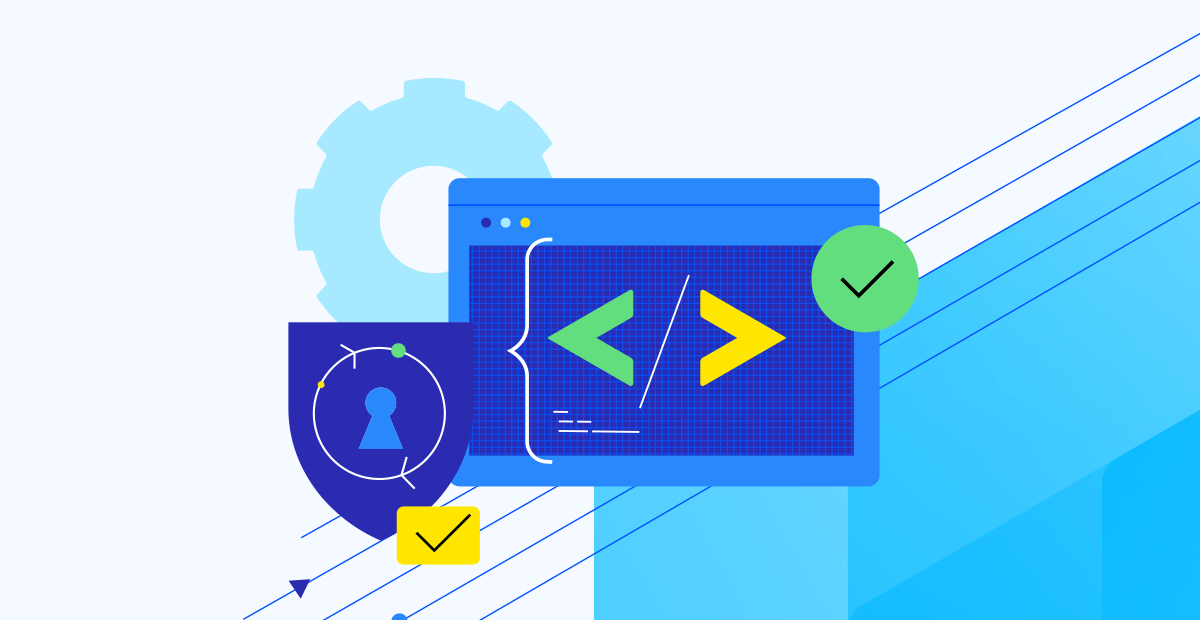MarkLogic Server 11.2 delivers flexible document transformation, enhanced security and performance and new integrations to elevate your data platform.
The Progress MarkLogic Server 11.2 release empowers your organization by improving developer productivity, enhancing security and adding new capabilities to your data platform. Developers can leverage new flexible document transformation features, integrate MarkLogic with leading cloud-based security providers and more easily connect your data ecosystem to the larger enterprise infrastructure.
MarkLogic Server 11.2 introduces updates to the Optic API for simpler document updates and querying, delivers enhanced security options with OAuth 2.0 JWT OIDC (Open ID Connect) support and improves platform performance and observability for large-data enterprises. The release also offers new native integrations with Progress Semaphore and Progress Corticon, allowing you to better incorporate business rules automation, text mining and semantic knowledge modeling into your data management and analytics operations.
Foundational Data Management with the Server 11 Series
We know investing in digital transformation remains a priority for most organizations. Forrester reports say 4 out of 5 IT decision-makers expect their organization to increase tech spending into 2024. Gartner forecasts an overwhelming growth in enterprise infrastructure software spending by 2027, with security, AI and business intelligence and integration leading the chart.
While organizations try to meet evolving business needs, a growing enterprise technology stack adds unwanted complexity to IT organizations, causing cost overruns. Moreover, when systems resist integration, it can jeopardize the delivery of projects and new initiatives.
Against that backdrop and the push for genAI adoption, for the first time in years, a dramatic shift toward prioritizing more qualitative data in D&A strategies is underway. While a year ago D&A leaders said only 27% of their organization's managed data was unstructured, Forrester predicted that 80% of new data pipelines built in 2024 would be for ingesting, processing and storing unstructured data—and companies would scramble to analyze and make sense of it.
MarkLogic has been prepared to support companies to operationalize their unstructured data at scale since its inception. The Server’s multi-model data management capability facilitates the integration of various data formats from any source to support data consistency without changing the data in its original source. This helps maximize your technology investment by making all your systems talk to each other without ripping your existing infrastructure. The Server’s flexible data model allows you to add new data sources as you go without breaking the data flows, designing new schemas or needing new ETL tools. This injects the agility that’s needed to deliver your data projects on time. It also helps you keep your data architecture simple and better controlled, even if your requirements change or data sources grow.
What’s New in MarkLogic 11.2
A new release is more than just a collection of new features and enhancements. It’s a continuous investment in compound innovation, modernization, reliability and extensibility. While improving the platform’s performance, scalability and stability is always a goal with every MarkLogic release, delivering agility, ease of use and time to value so you always have new ways to succeed in a data-first world continues to be our north star.
The MarkLogic Server 11.2 Innovation release delivers on our uncompromising commitment to your security and finding sustainable solutions to real-world data challenges. We’ve focused on expanding core functionalities introduced in MarkLogic Server 11 as well as on the enterprise stack interoperability to support cost-effective growth and help drive real business impact faster.
We’ve worked to enable customers to leverage the larger Progress portfolio and add capabilities to improve decision intelligence and accuracy as well as decision automation.
Flexible Document Processing and Simplified Queries
MarkLogic Server 11.0 featured several new capabilities based on the Optic API—the unified language in MarkLogic that allows you to query multi-model data. These capabilities included GraphQL support for connecting to new BI and analytics tools, row-based geospatial queries to help model and query geospatial data in new ways, and a document update capability integrated into the Optic language.
Initially released in Technical Preview in 11.0, the Optic Update capability allows you to declaratively update one or more documents—like applying a 10% increase in price to all products—without writing any server-side code. By combining facilities for query, insert, update and delete operations into a single expression, it simplifies and speeds the querying and processing of data in MarkLogic.
MarkLogic Server 11.1 added server-side XQuery support and Node.js Client support for Optic Update so, along with JavaScript and the Java Client, you can work with all aspects of the Optic API in your preferred server-side or client language.
Optic Update is now generally available and ready to use in production environments. With this release, we’re introducing the ability to selectively update specific subsections of documents, i.e., “patch” content, reducing the amount of data that needs to be passed back and forth from a client to the server. We’re also introducing enhanced error handling to make the processing of large transactions in micro-batches more efficient and flexible by specifying how errors should be handled.
Enhanced Security Options for Simpler Infrastructure Integration
Building on the MarkLogic Server 11.0 OAuth 2.0 support, 11.2 now provides more options to set up authentication flows and cover a wider range of scenarios. Through the MarkLogic Server Admin UI, REST API and built-ins, you can now configure OAuth 2.0 as an external security object that uses JSON Web Tokens (JWT) to authorize and authenticate external users. This mechanism expands the options that are available for integrating MarkLogic Server into your enterprise security architecture.
The added JWT with HMAC signature support will simplify your implementation with all leading cloud-based security and federated identity providers, including Microsoft Entra, Amazon Cognito, Ping and more. You can easily leverage your existing OAuth-enabled IDP solutions to perform authentication and authorization in MarkLogic Server. This eliminates the need to import and store that information in MarkLogic Server, helping you reduce both security risks and governance overheads.
Improved Performance, Scalability and Stability
Admin Performance Improvements
The Admin UI is now more responsive when used on large clusters. Rebalancing and reindexing statuses are tracked via modal status dialogs making the database and forest status pages more responsive. We also continue to make improvements to the look and feel, including new branding to align with the Progress product ecosystem.
App Server Queue Size Monitoring
In MarkLogic 11.2, we’re exposing the app server “queue size” metric to be able to monitor the internal request backlog for each MarkLogic app server. You can now see the number of requested queued in the Monitoring History, as well as on the app server status page, making it easier diagnose performance bottlenecks in your MarkLogic clusters.
XCC Client Handles Elastic Load Balancer Events
The XCC client libraries now handle elastic load balancer events that cause IP addresses to change. This allows long-running jobs, such as those from mlcp or Corb, to reconnect dynamically and leverage the elastic nature of modern-day load balancers.
Brand New Progress Ecosystem Integrations
Native Integration with Progress Semaphore
Joint MarkLogic and Semaphore customers can now enjoy out-of-the-box integration with Semaphore and access the Server directly from Semaphore Studio.
MarkLogic Server powers the new Semaphore Concepts Server to improve query performance of large semantic models and enhance access for downstream systems. The Server also enables the Semaphore Text Mining Side-Panel, launched with Semaphore 5.8, so you can analyze large amounts of content based on your knowledge models.
The Concepts Server capitalizes on MarkLogic Server’s capability to expose data in JSON and GraphQL, giving you more ways to connect your models to analytics and BI tools with minimal memory footprint at query time.
The power of Semaphore goes beyond knowledge models. If you’ve considered adding semantic middleware to your data platform to add more context to your data with metadata or support genAI—this is a great time to venture into classification, fact extraction and text mining as you can lean on the native integration between the two products.
Native Integration with Progress Corticon
You can now automate complex decisions in MarkLogic with Corticon, the Progress business rules engine. Corticon.js 2.1 introduces a native integration to the Server, allowing you to package rules as self-contained JavaScript bundles that can run natively in MarkLogic, so your decision processes are closer to the data.
This integration is a true home run for our team and a significant leap toward delivering data and business agility. Corticon provides an elegant solution for turning business logic into code and it fits perfectly into the data curation process in MarkLogic. Its low-code interface for business users allows subject matter experts to turn policies into automated rules and rapidly update them when business or regulatory requirements change, while IT can deploy them directly on MarkLogic through a simple API integration. JSON data retrieved from external services can be added to the payload being processed with a single line of code.
This can be particularly helpful for large organizations in highly regulated markets like financial services, healthcare and the public government to automate the processing of benefit claims, flag potential regulatory violations or perform harmonization to clean up large data ingested into MarkLogic.
Toward Future-Ready Data
A new release is always a good time to revisit your upgrade planning and get familiar with the Progress delivery and support cycle that MarkLogic has now adopted. Dive deeper into what’s new in the MarkLogic Server 11.2 and join us for live demos and more product insights as we unpack the new release in our May community event.

James Kerr
James Kerr is a Software Fellow at Progress and the Product Manager for MarkLogic Server. He has been with the MarkLogic team for nearly 15 years, holding positions in consulting, alliances, cloud enablement, performance engineering and product management. During this time, James has worked with customers to build some of the largest, most complex data management systems on MarkLogic. He now brings that extensive customer experience and operational knowledge from the field to help guide the product into its next chapter as part of Progress.
Related Tags
Related Articles

Latest Stories in Your Inbox
Subscribe to get all the news, info and tutorials you need to build better business apps and sites
